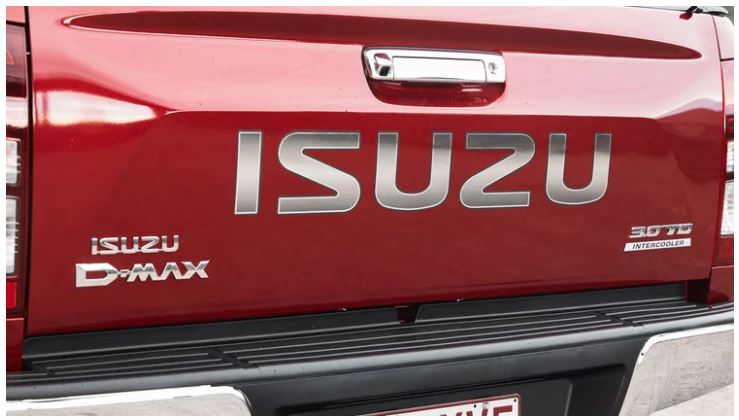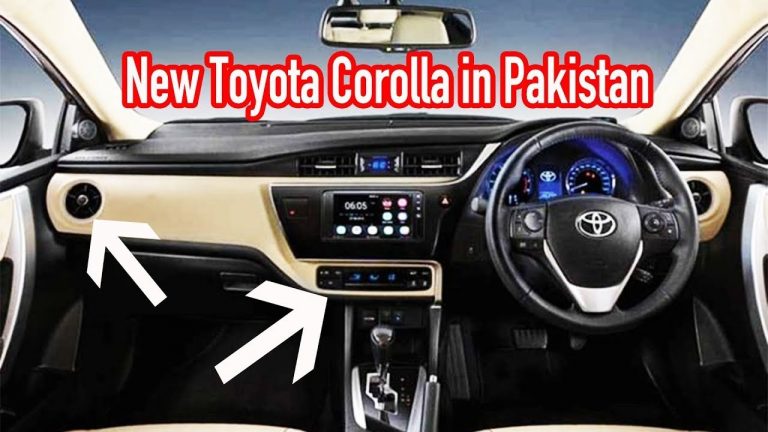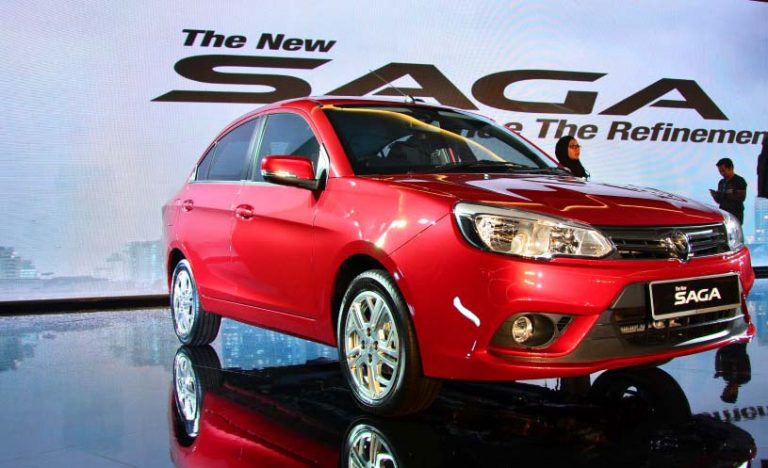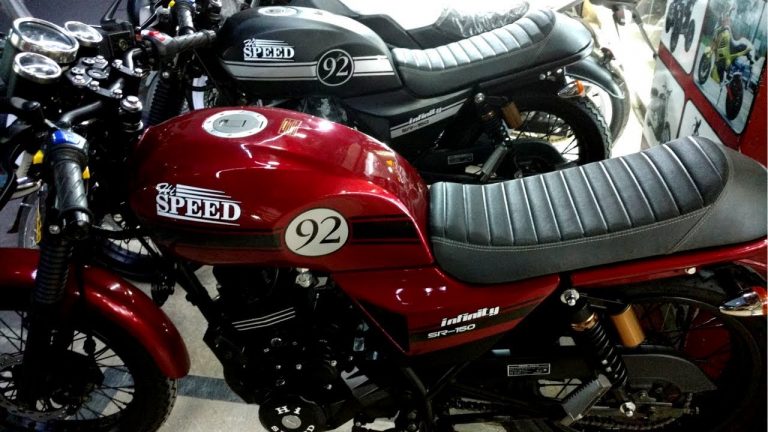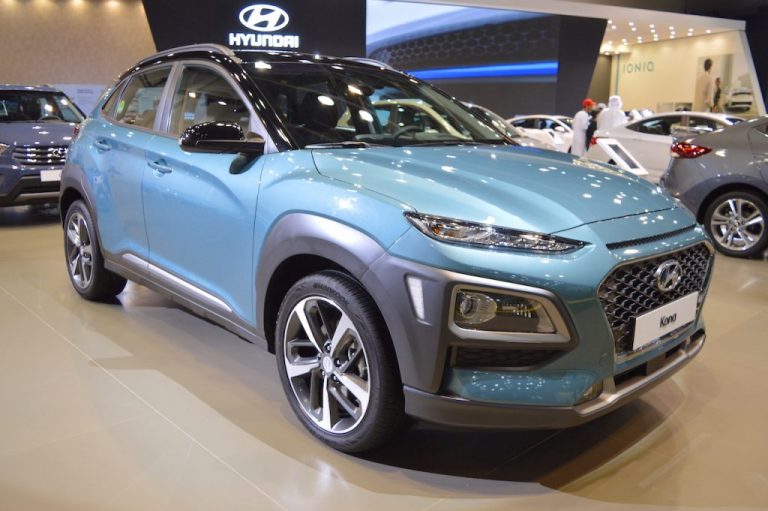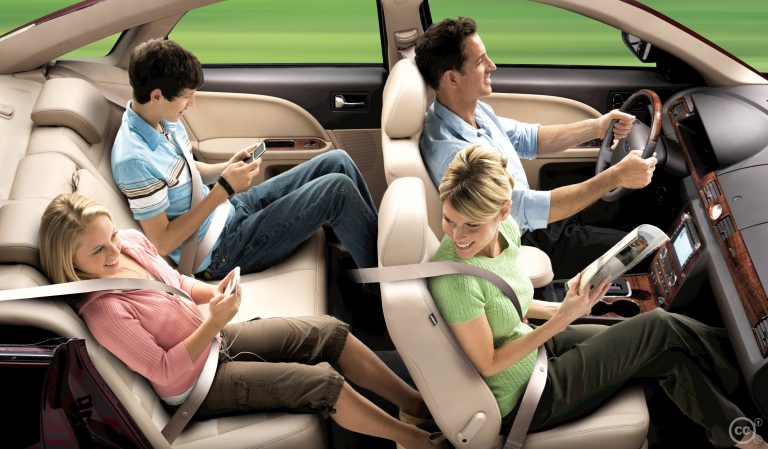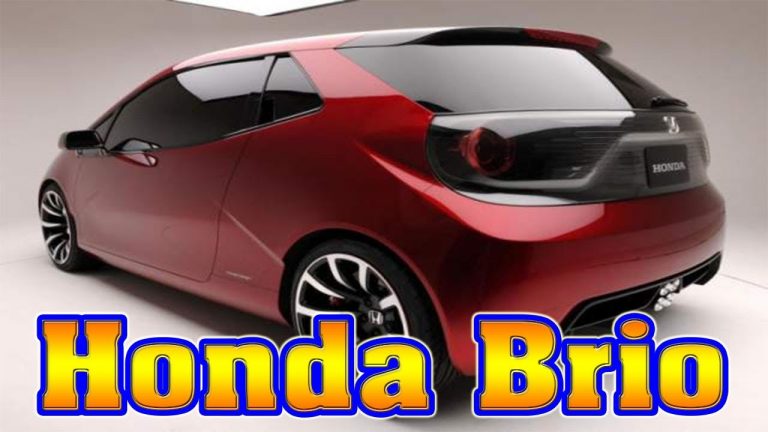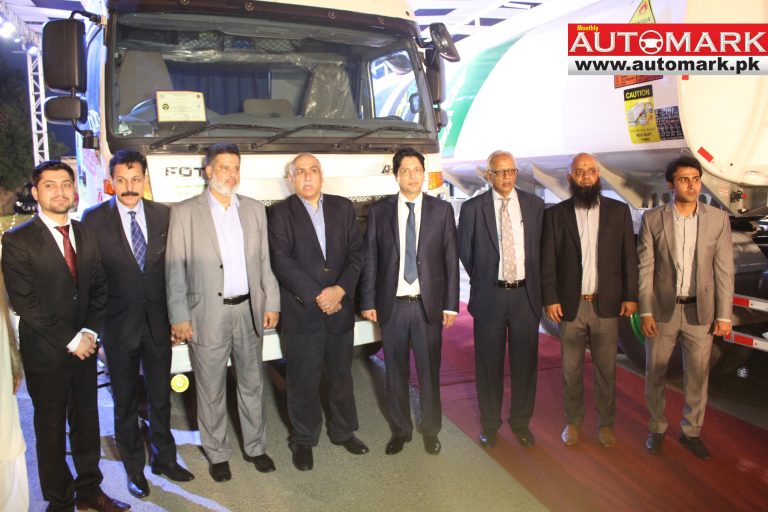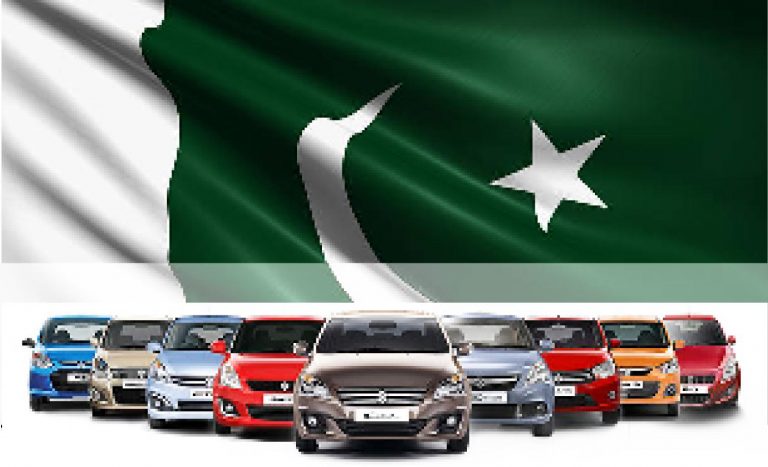Toyota will dissolve its capital tie-up with Isuzu by selling off its 5.89 percent stake in the latter; carmakers to continue collaborating on projects.
Toyota Motor Corporation will be selling its 5.89 percent in Isuzu Motors in the future, thus dissolving their capital tie-up. However, the two companies will continue their strong relationship through ongoing joint development projects related to basic technologies and will remain open to the possibility of future collaboration.
In November 2006, Isuzu and Toyota signed a basic agreement to utilise each other’s operational resources in the fields of development and production focusing on diesel engines, to provide mutual technical assistance and to create a framework capable of capitalising on the resulting synergistic effects, and to examine the feasibility of collaborative projects. At the same time, Toyota also agreed to obtain a stake in Isuzu.
However, with changes in the market environment prompting the companies to suspend some of the originally considered projects and little specific progress achieved in other collaborative efforts, Toyota and Isuzu have agreed to re-examine the capital relationship based on the current business situation.
As the automotive industry faces sweeping changes, Isuzu and Toyota intend to accelerate their efforts to improve competitiveness in the commercial and passenger vehicle markets, respectively.
Toyota to sell entire stake in Isuzu
Indus Motors launches Toyota Corolla XLi Automatic variant in Pakistan
Pakistani automaker Toyota Indus Company launches Toyota Corolla XLi with 4-speed automatic Transmission and Eco-meter. It will be the first XLi that is going to feature an automatic gearbox.
Other than the automatic transmission and ECO meter, the XLi A/T will come with the following features:
• Dual SRS Airbags
• LED Clearance Lamps
• Side-View Mirror with Turn Signals
• Immobilizer
According to our sources Indus Motors have import CKD of automatic transmission and install in their currently available model 178B of XLi version with minor changes.
It is expected now that they will launch this car with a price tag of over 2.5 million rupees, making it out of reach for many customers as Honda Aspire Automatic 1.5L variant has a lower price. With the new XLi, now Toyota is having all models available in manual and AT variant. It is worth noting that Toyota Indus has already an automatic variant for its Corolla GLi, a car with a minute difference compared to XLi.
CEO IMC Ali Asghar Jamali said “Corolla is the most loved automobile brand made in Pakistan and we are thankful to the overwhelming appreciation and response of our customers. Toyota has always strived to provide products that satisfy customers and compete in the market. After continuous demand requests and to capitalize on our 1.3L segment, IMC is pleased to announce the introduction of 1.3L XLi Automatic.”
Initially the variant will be available in two” colors i.e. White and Attitude Black and the Moreover, vehicle performance, safety features, braking system, interior, exterior, infotainment system will create a good driving experience for the customers.
The booking is already open from 6th August 2018 on first come first serve basis. We will be featuring the launch and will come up with full specifications of the car and its review, so stay tuned and do tell us your views about Toyota’s move in the comments section.
Earlier, there were rumors that Toyota IMC might discontinue the production of Corolla XLi and GLi. Recently, Honda has also announced that they are not planning to launch a 1200cc hatchback Honda Brio.
by Aqsa Mirza
Malaysian car Proton reaching high hope after stake sold to Chinese automotive Geely
History of Malaysian ‘Proton’
‘Proton‘ is the Malaysian based automobile manufacturer which holds a major share in the Malaysian automotive industry. Established in 1983, it was a symbol of national pride and a country moving towards industrialization.
In Britain, it sold 10,300 units in its first year, far above expectations. By 1998 and thereafter, Proton grabbed some 80% of the passenger car market.
However, Proton never picked up speed, having been overtaken by foreign competitors and subsequently and struggled over its future direction.
Proton was set up by the Government in 1983 and started building cars two years later in association with Mitsubishi of Japan, which took up a 30% equity interest.
The new millennium was a difficult one for Proton. The launch of GEN.2, which saw the first Proton model that featured the company’s proprietary Campro engine, did not meet expectations. By March 2004, Proton ended its long-time association with Japan’s Mitsubishi and was left to chart its own future.
Chinese Geely buys shares of ‘Proton’
In May 2017, Zhejiang Geely Holding Group and DRB-Hicom signed a deal according to which Zhejiang Geely Holding Group bought a 49.9% stake in Proton Cars. Under this deal, Geely Holding Group was committed to seeing a full revival of Proton Cars to being the number one Malaysian domestic brand and the leading brand in South East Asia.
On 3rd August, China’s Zhejiang Geely Holding Group signed an agreement to acquire a 49.9-percent stake in Malaysia’s carmaker Proton, 30 days after an initial deal was reached between Geely and DRB-Hicom, the Malaysian conglomerate that owns 100 percent of Proton.
The deal was valued at 460.3 million ringgit (108 million U.S. dollars), including a cash injection of 170.3 million ringgit into Proton by Geely, and a sports utility vehicle platform that is worth 290 million ringgit, DRB-Hicom Managing Director Syed Faisal Albar told a press conference following the signing ceremony.
‘Proton’ launched in Pakistan in 2006 but unsuccessfully left
Proton launched in Pakistan back in 2006 with a hope of development and expansion. Launching ceremony which was held on Friday 15th September 2006 was honored by the then Chief Minister of Sindh Mr. Arbab Ghulam Raheem. Four models were introduced namely the Impian 1.6, Gen-2 1.3 & 1.6, Wira 1.5 and Saga 1.3.
Most of the Proton vehicles were based on Mitsubishi’s technology as Proton had a technical collaboration agreement with the Japanese manufacturer. The vehicles entered in Pakistan being CNG equipped and were priced quite economically but sadly probably due to the lack of vision and finances of the local distributor in Pakistan Proton vehicle could not get the attention it deserved and thus was discontinued very soon. However, we can still see few Proton cars running on Pakistani roads.
The public stopped relying on this new venture due to some obvious reasons such as no after sale services and incompetent mechanical services provided by the local company representing Proton in Pakistan.
Undoubtedly, Pakistani automobile industry has a lot of potentials and it is rapidly growing but the consumer pattern is quite divergent here and which was the reason why Proton did not have a success story in Pakistan. Some customers would prefer resale, while others would go for the most unique car with best features. Some would prefer fuel economy, the other would want a gas guzzling V8s; just to flaunt it to the public. Therefore, it would be wrong to say that resale was the only reason to the Proton’s end.
Future Prospects
Looking at the number of used imported cars on the road, it seems that if Proton had improved on their after sales and quality of labor, they could have been a great company.
We are hopeful that Malaysian ‘Proton’ would come back soon in Pakistan enriched with innovative and modern features with the backing of Geely/Volvo Technology, Safety and reliability along with the complete backup support and reasonable priced vehicle.
By Aqsa Mirza / Hanif Memon
Motorcycle production up 15.44pc to over 2.650 million units
The production of motorcycles during the first eleven months of fiscal year (2017-18) increased by 15.44 percent as against the corresponding period of last year, Pakistan Bureau of Statistics (PBS) reported.
As many as 2,650,233 motorcycle were manufactured during July-May (2017-18) against the output of 2,295,846 during July-May (2016-17), showing growth of 15.44 percent, the latest PBS production data revealed.
The production of cars and jeeps witnessed 20.10 percent increase during the period under review as 214,904 jeeps and cars were manufactured during July-May (2017-18) against the production of 178,944 units during July-May (2016-17).
The production of light commercial vehicles (LCVs) witnessed an increase of 18.54 percent in production during the period under review by growing from 22,927 units last year to 27,178 million during 2017-18.
The production of tractors also increased from 50,049 units last year to 67,371 units, showing growth of 34.61 percent while the production of trucks increased by 20.27 percent, from 7,104 units to 8,544 units.
However, the production of buses during the period under review witnessed negative growth of 31.54 percent by going down from the output of 1,043 units to 714 units.
Meanwhile, on year-on-year basis, the production of motorcycles increased by 14.57 percent by growing from the output of 231,295 units in May 2017 to 264,984 units in May 2018.
The production of tractors also witnessed upward growth of 19.56 percent by growing from 5,746 units in May 2017 to 6,870 units in May 2018.
The production of jeeps and cars increased by 0.74 percent as the country manufactured 18,227 jeeps and cars during May 2018 against the production of 18,094 units during May 2017, the PBS data revealed.
Hyundai Kona
The Hyundai Kona is a compact B-SUV introduced specifically with developed car markets in mind. The Hyundai Kona features high specifications and is positioned as a premium, dynamic choice over the Hyundai Creta in global markets. It is designed to attract the younger, more style-conscious buyer.
With regard to engine options, the Hyundai Kona gets a 1.0-litre (120 PS) T-GDI petrol, a 1.6-litre (177 PS) T-GDI, 2.0-litre (149 PS) MPI and a 1.6-litre (136 PS) VGT diesel engine. Transmission choices on offer are 6-speed manual, 6-speed automatic and 7-speed dual-clutch automatic.
Automotive Seat Belts and Air Bags History
Seat Belts
American Edward J. Claghorn created the first patented seat belt on February 10, 1885 in order to keep tourists safe in taxis in New York City. The real breakthrough with modern seat belts came in 1958 when Swedish engineer Nils Bohlin invented the three-point seatbelt.
The use of seat belts in automobiles did not begin in earnest until the mid to late 1950’s. Even then, seat belts were considered optional equipment. In 1955, famous actor James Dean died in a spectacular two-vehicle crash in the Southern California desert, which he likely would have survived had he been wearing a seat belt. History was made. The seat belt industry bloomed.Probably more so than any other incident, the Dean crash launched a new period of public awareness about seat belt utilization in automobiles and their possible advantages.
In 1955, Swedish automaker Volvo was the first manufacturer to offer seat belt systems as standard equipment in its automobiles on a safety first theme. Volvo backed up its claims with a substantial amount of crash testing it independently performed during the 1950’s, which provided inescapable proof that use of a seat belt during an automobile accident, would reduce both fatalities and serious injuries.
Although history shows a heightened public awareness about seat belt safety, in the United States some American automakers wanted to offer seat belts as optional equipment in their vehicle lines, few customers ordered seat belts and they were never made standard equipment in American cars until the mid-1960. This spirit of innovation, excellence and customer orientation in the creation of the automotive safety systems industry and these same values in Autoliv Inc, the global market leader in safety systems today have one more thing in common, both originate from Sweden.
Air Bags
During the mid-1980’s, while the automatic restraint systems were being troubleshot in production, crash research was leading to the conclusion that an inflatable air bag (often referred to as the SRS – supplemental, restraint system) could supplement vehicle occupant protection in an accident is used as a supplement to seat belts and shoulder harnesses.
Inclusion of these systems in new vehicles began to become mandatory in certain passenger vehicles the early 1990’s and was gradually phased in into other types of vehicles. Air bags, of course, also pose their own risks. Recent concern has arisen over the potential for air bags, during deployment, to cause serious life threatening injuries to certain occupants, such as small children and frail adults, during sudden air bags inflation. Nonetheless, air bags have greatly reduced the number of fatal and serious auto injuries in vehicular accidents, particularly in highway accidents involving greater speeds.
At Present
Autoliv is the forefront of automotive safety technology especially in seat belt and air bags manufacturing in the world. Autoliv is the world’s largest automotive safety supplier, with sales to all major car manufacturers in the world. More than 72,000 associates in 27 countries are passionate about the vision of Saving More Lives. Autoliv develops, manufactures and markets airbags, seatbelts, steering wheels, passive safety electronics and active safety systems, including brake control systems, radar, night vision and camera vision systems.
Research by
Nadeem Aftab
Head of Production
Plastech Autosafe – Karachi
30,000 bike riders in Karachi suffer head injuries due to not wearing a helmet
Pakistan is a middle-income country where a motorcycle is a common mode of transportation. Youngsters while riding motorcycles forget to wear a helmet which ultimately leads to severe head injuries. The number of reported cases of head injuries in Karachi is increasing on a daily basis. Head injuries are considered to be very expensive in terms of lives lost, efficiency losses, and health care expenses. Head injury is considered to be serious if the brain gets affected, otherwise, the injury is expected to be a simple one.
According to Dr. Ali Raza who is the head of the Neuro Trauma Department at Jinnah Medical Post Graduates Center (JPMC), more than 30,000 people suffer from head injuries every year.
Speaking at the Research and Updates in Neuroscience Conference (RUN) at the JPMC, Raza said more than 80 youngsters get injured in motorcycle accidents every day due to not wearing helmets.
He asked the conference attendees to spread the message of wearing helmets which could prevent fatalities and save a life.
Dr. Lal Rehman, the director education of neurosurgery and neuroscience at JPMC said, the majority of people suffer from a brain hemorrhage and head trauma due to not wearing helmets while riding a motorcycle.
Currently, the JPMC Neuro Trauma Unit is the only place in the country which is providing the latest technology and treatment regarding neurological and surgical issues, with advanced machines such as Cyberknife, Gamma Knife, and radiotherapy at the hospital, Rehman stated.
Head injuries can be fatal resulting in the death of the patient. Studies have found that the majority of the deaths in accidents have been due to head injuries or head trauma. These are a major cause of mortality or disability among the youth of the nation. Steps need to be taken to control fatal head injuries by adopting effective preventive measures like wearing a helmet, traffic control, and management, rapid response to accidents, effective and efficient handling of cases in hospital emergencies.
Honda postpone its plan to launch locally assembled car 1200cc Brio in Pakistan
The management of Honda Atlas Cars Pakistan (HACP) has decided to delay the launch of a new locally-assembled car due to the country’s uncertain economic condition. The pre-planning of the car had already begun. Honda had given the drawings of tools, molds and design to the local vendors around six months back.
According to the latest reports, vendors have also been asked to return the drawings that were given to them by Honda Atlas. A Honda vendor went on record and claimed that:
“HACP has now asked local vendors to cancel their activities for parts development. They also asked for the drawings to be handed back to the company.”
Honda has taken this important step due to car assembler’s concern of rupee losing its value by over 5% in the past few months. The car assemblers claim that the cost of the vehicle becomes expensive due to the weak currency’s situation, which is highly unstable at the moment. It is said by the stakeholders that work started on a new model almost 1.5, 2 years before it is actually launched. But when the rupee devalued against the dollar the automaker decided to halt the production of a new car.
Vendors said, “Economic conditions, uncertain rupee-dollar rates, reports of imposing additional regulatory duties on raw materials, etc have compelled the company to defer the plan to roll out a new model.”
It was reported that Honda Atlas is planning to launch locally assembled 1,200cc Brio in Pakistan by 2019. It could have added 3000 units in Honda’s total production. But as per the sources, it is not happening anymore. The company has deferred the plan.
On the other hand, a HACP official said,“Its (Honda Brio) launch is neither final nor dropped. It is yet to be finalized for entry into the Pakistani market. It is in the planning phase.”
In Pakistan, Honda Atlas sold 42,810 units of its iconic cars Civic and City is the fiscal year 2018 compared to 37,004 units in the fiscal year 2017. Similarly, 8,684 units were sold of Honda BR-V is the fiscal year 2018 compared to 2,159 units from April to June 2017.
by Aqsa Mirza
Master Motor Handed Over OGRA Compliant Vehicles to PSO for POL Transportation
Karachi, August 01: “Master Motor Corporation Ltd. (MMCL) in pursuit of its commitment to safe transportation of petroleum products has developed vehicles in compliance with standards set by Oil and Gas Regulatory Authority (OGRA).” Managing Director of MMCL Nadeem Malik said this at an event recently held in Karachi.
While handing over the keys of a fleet of more than 40 vehicles to contractors of Pakistan State Oil (PSO), he commended the efforts of PSO and OGRA for their efforts to ensure the safety of transporters, transportation vehicles and the common commuter.
He said that Master Motor strictly follows the standards and regulations set by OGRA and addition of our trucks to PSO fleet is a proof of our commitment. “MMCL has a vision to serve the transport industry of Pakistan with the highest quality products and after sales services. We are the first company to offer complete range of products to facilitate the complete commercial vehicle segment,” he added.
MMCL’s growth in the past fiscal year was the highest in the automotive industry with a year on year growth rate of 63 percent. “This significant increase in production and sales is a sign of customers’ trust in quality of our products and after sales services network which is one of the largest such networks in the country catering to more than 10,000 master vehicles already plying on road,” said Nadeem.
“PSO as nation’s largest energy company has been striving to help national economy by building and enhancing a wide-spread retail network with the support of a well-established storage and supply infrastructure,” said Managing Director PSO, Sheikh Imran ul Haq.
“Addition of vehicles manufactured by Master Motors as per the OGRA guidelines to our fleet of over 8000 vehicles will boost the performance and safety of our POL transportation network,” he added.
It is worth mentioning here that MMCL is also an authorized assembler and dealer of world’s renowned brands like Mitsubishi Fuso, Foton Daimler, IVECO.
MMCL follows OGRA rules and guidelines that covers German National Standards, EEC standards for European communities, “NEQS” National Environmental Quality Standards prescribed by the Environmental Protection Agency of Pakistan, National Highway Authority, standard for truck chassis, ADR – Association of Dangerous goods road transportation, Fire Extinguisher etc which ensures safety factor. -PR
Suzuki to increase its car price by Rs. 20,000 to 40,000 from 1st August 2018
Pak Suzuki Motors Limited., (PSMCL) has once again increased the prices of its vehicles. The new prices will be applicable from the 1st of August, 2018. The maximum increase in the car prices is from 20,000 to 40,000. The circular which the company has sent to its dealerships the new prices.
According to a July 31, 2018 circular, Pak Suzuki Motors increased the price of Suzuki Mehran VX model to Rs 769,000 from Rs 739,000. The Mehran VX model would be discontinued from November 2018. The new price of Suzuki Mehran, VXR has been raised to Rs 840,000 as compared to Rs 795,000. Suzuki Bolan and BolanCargo will now be priced at Rs 834,000 and Rs 800,000 compared to Rs 814,000 and Rs 780,000 respectively. The price of Swift manual transmission and Swift automatic transmission has been jumped to Rs 1.475 million and Rs 1.611m from Rs 1.435m and Rs 1.571m earlier.
Also read: Get Ready: Car prices might rise up once again following rupee devaluation
In a circular to its authorized dealers, PSMCL said the price hold will not be applicable to old pending and due orders which failed to deposit their payment within tentative delivery date of vehicles. It is important to mention that the retail prices are inclusive of ex-factory product price and freight charges incurred on the vehicle to reach dealership premises. The company has also increased the prices of its two-wheeler vehicles. In the two-wheeler segment, the company raised prices by Rs 3,000 to Rs 6.500. The price of GR 150 has been jumped to Rs 229,000 from Rs222,500. GD110S will now be available at Rs 145,000 instead of Rs 139,000 and SD 110 Eco at Rs 119,900 against its previous price of Rs 114,900. Similarly, prices of G S150 and GS150SE have been increased up by Rs 3,000 each to Rs 150,000 and Rs 170,000, respectively.
Meanwhile, the local automakers also argued that not all parts of the cars are manufactured locally, so the automakers are forced to import parts from foreign vendors, which due to the devaluation of the rupee have now become expensive.
Looking at Suzuki’s latest move, one can argue that Honda Atlas, IMC Toyota, and Al-Haj FAW might also surge the prices of their vehicles sooner or later.
By Aqsa Mirza
